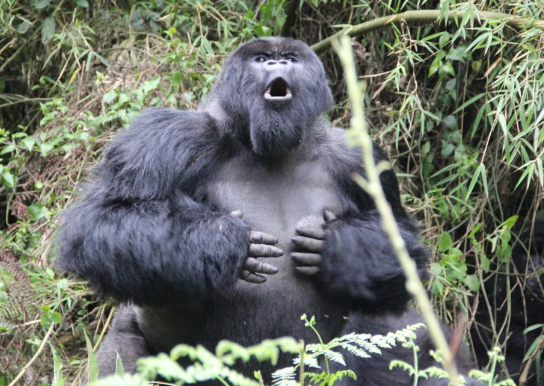The Vocal Communication of Gorillas
Gorillas are fascinating creatures that communicate in a variety of ways, showcasing their intelligence and social nature. Understanding their vocal communication not only enhances our appreciation for these majestic animals but also contributes to conservation efforts and informs our understanding of primate behavior. This article explores the most significant aspects of how gorillas communicate with each other.
The Sounds of Communication
Gorillas produce an array of vocalizations that play a crucial role in their daily interactions. These sounds include grunts, roars, barks, and more subtle noises like whispers. Each vocalization has a specific meaning, conveying emotions ranging from excitement to alarm. For instance, a low grunt might indicate comfort or contentment, while a sudden roar can signal distress or territorial warning. By studying these sounds, researchers gain valuable insights into gorilla social structures and their responses to environmental changes.
Non-Verbal Cues Complement Vocalizations
While vocal sounds are vital for communication, gorillas also rely heavily on non-verbal cues such as body language and facial expressions. A raised hand or a specific posture can signal an invitation to play or a request for space. Observing these behaviors alongside vocalizations provides a more holistic understanding of their communication methods. For example, a gorilla may grunt softly while displaying a relaxed posture to indicate they are feeling safe and non-threatening. This multi-dimensional form of communication reflects their complex social dynamics and can reveal much about their emotional states and relationships within the group.
The Importance of Understanding Gorilla Communication
Recognizing the nuances in gorilla vocal communication is essential for their conservation. As their habitats continue to face threats from deforestation and human encroachment, understanding their needs and responses can help in developing effective conservation strategies. Moreover, improving our knowledge of gorilla communication can enhance captive management practices, fostering better well-being for individuals in zoos and sanctuaries. This understanding ultimately bridges our connection with these animals, highlighting the importance of protecting their natural habitats for future generations.
In conclusion, the vocal communication of gorillas is a remarkable aspect of their social lives, revealing much about their emotions and relationships. As we learn more about how they express themselves, we not only deepen our connection to these incredible creatures but also empower conservation efforts. To delve deeper into this topic and explore more about gorillas, consider visiting a local zoo or sanctuary, or support wildlife conservation organizations focused on gorilla protection. Together, we can ensure that these magnificent animals thrive in their natural habitats.

